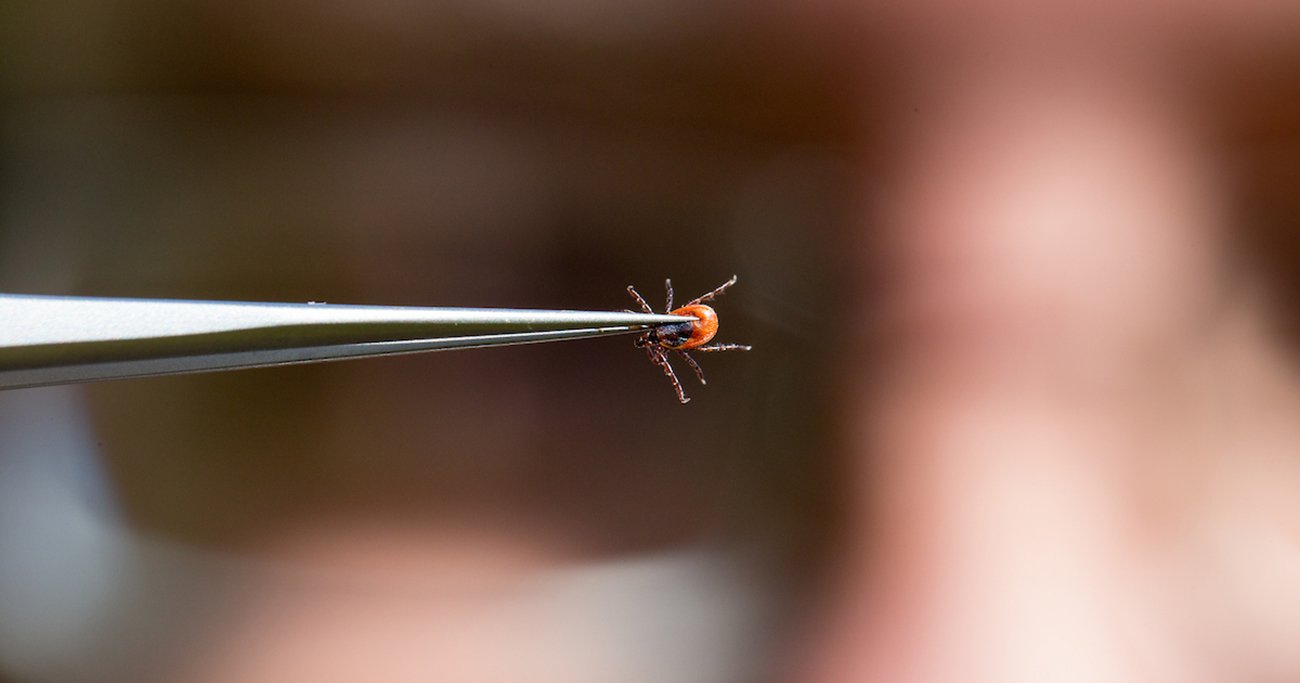Each spring, Minnesotans are warned about the dangers of tick-borne and mosquito-borne diseases. This season, more Minnesotans than ever will need to take heed. In the last thirty years, ticks have enlarged their territory to spread all over Minnesota. Historically limited to just the border area with Wisconsin, they can now be found in all forested areas and even some prairie environments. What is the basis for this massive spread? Some experts think climate change could be the culprit.
“It is difficult to assign to what extent climate change by itself is relevant,” says entomologist Jon Oliver, an associate professor in the University of Minnesota School of Public Health (SPH). “But, it is likely that the northward spread of the tick population is due to milder winters.” Also, with temperatures warming up earlier, mosquitos and ticks will be out sooner, giving them more time to be active and seek hosts throughout the year, he explains.
However, if climate change brings dryer conditions, that could have a negative impact on tick and mosquito populations and decrease the spread of insect-borne diseases. Insects like mosquitoes need standing water to reproduce. While ticks are more robust, they thrive in shady, moist environments such as forested areas. “If there are drought conditions, then expect those ticks to be less active,” says Oliver. “They will retreat into the soil, only searching for hosts when conditions are damp enough.”
“While official reports of lyme disease are around 35,000 cases per year, the CDC admits it’s probably closer to 350,000 cases a year,” says Oliver.
Will climate change’s warmth increase insect-borne diseases in Minnesota, or will drought conditions decrease their spread? It is hard to predict, but if we look back at the last twenty years, signs point to the former.
The data shows that there are more vector-borne diseases, those spread by animal hosts, than there were 20 years ago. In fact, a 2016 Centers for Disease Control and Prevention (CDC) report shows disease cases nationwide doubled in twenty years, and many were only discovered relatively recently. Lyme disease was only discovered in the 1980s. Human anaplasmosis was first identified in Minnesota in the mid-90s and is now the second most common vector-borne disease after lyme disease in Minnesota. Diseases spread by tick are by far the most common, and very underreported.
“While official reports of lyme disease are around 35,000 cases per year, the CDC admits it’s probably closer to 350,000 cases a year,” says Oliver. “Part of the problem is the surveillance system. It’s overly specific,” he says. A patient needs to develop the bulls-eye rash, have a positive serological test, and need an antibody test consistent with bacteria that causes lyme disease to be counted. A doctor doesn’t need that information to treat a patient with an antibiotic, which is time-sensitive when infection is suspected.
Oliver and colleagues are working on a tool that has the potential to increase surveillance effectiveness for tick-borne diseases. The nanopore sequencer provides molecular detection of disease-causing bacteria in vectors ranging from insects to rodents. Scientists can test for diseases in the field in real time rather than bringing the specimens back to a lab. That means that researchers can change their focus if needed while they’re still collecting in the field if they uncover a new pathogen, or an unexpected outbreak.

“You can get a whole genome sequence of that pathogen and see how it is related to others you find in the field, tracing the spread over time,“ explains Oliver. It is also relatively inexpensive and doesn’t require a full laboratory — making the nanopore sequencer ideal for looking for emerging diseases in remote areas.
The potential to uncover emerging pathogens is critical as humans continue to spread into previously uninhabited environments. As insects and other vectors spread as a result of climate change, it will be a question of not if, but when, a new disease or pathogen emerges. Increased surveillance and testing is one of the best ways to identify, prevent, and prepare for the next vector-borne outbreak.

